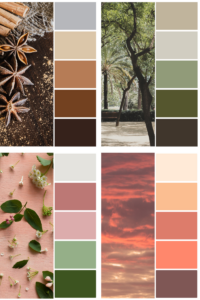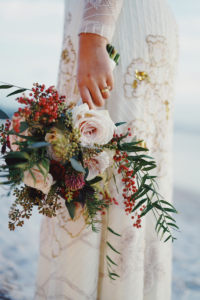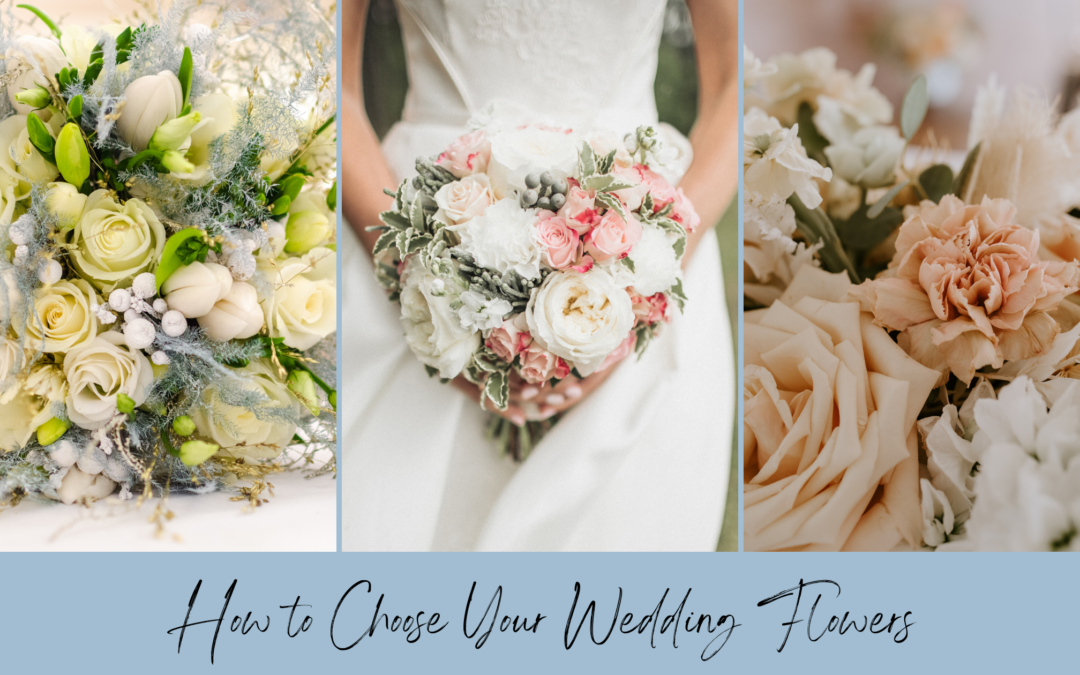One of the fun parts of wedding planning for a bride is choosing your wedding flowers. But, it can be one of the most overwhelming parts, too! You likely have never planned an event where you need so many flowers, and if you aren’t a florist, you probably don’t even know where to start. Well, today’s post will hopefully help with this!
Tips for Choosing Your Wedding Flowers
Here are some of our overall tips for choosing your wedding flowers!
Figure out your budget

The first step to securing any wedding vendor is to figure out what your budget is for that vendor. This is going to vary for everyone! On average, most couples spend about 8 percent of their overall wedding budget on flowers. However, this really depends on how many flowers you are wanting to have, the type of flowers, etc!
If you are wanting to go all-out with flowers, then you may need to cut back on another portion of your wedding budget. And if you are wanting to keep flowers minimal, that may mean that you have more of your budget to spend elsewhere.
Regardless of what you are looking for, it’s important to figure out some type of budget before talking to florists. They will need to know what you’re willing to spend to achieve what you’re looking for.
Gather inspiration
Before you meet with any florists, gather inspiration! This can be from Pinterest, wedding magazines, or even recent weddings that you’ve attended. Gather inspiration of things that you love and things that you hate. Having physical images to look at will help your florist better understand what you’re looking for!
Learn the basics
We suggest learning some of the basics of wedding flowers before you meet with florists. Of course, this doesn’t mean that you need to become an expert overnight!
But, if you don’t already know some of the basic wedding flowers, it can be a good idea to research this before you meet with your florist. This can just help your appointment go a bit more smoothly!
Some of the most popular wedding flowers to research include: hydrangeas, roses, ranunculus, lilies, and peonies. Knowing some of the common wedding flowers and terms will help you from feeling completely lost when your florist is giving you some of their ideas!
Find a florist and/or designer

Once you have some inspiration and basic knowledge down, it’s time to find a florist or floral designer. First things first, you might want to know the difference between a florist and a floral designer. A floral designer will make your arrangements, but will also help design the look of your tables, ceremony aisle, etc. A florist will simply put together your arrangements.
Keep in mind that a floral designer will be more expensive than a standard florist, so your budget will be something to consider!
You might be wondering, “how do I find a good florist or floral designer?” Well, your planner is a great place to start. As planners, we tend to have really great working relationships with some of the best florists and floral designers in the area! If you have us as a planner, we will have recommendations for you that will fit your wedding vision.
Something to remember when researching florists: if they are the cheapest in the area, that isn’t necessarily a good thing. They might be cutting corners when it comes to size, service, and quality. There is probably a reason that they are cheaper than others in the area, which is something to consider!
Think about your wedding colors

If you truly have no idea where to start when choosing your wedding flowers, think about your color palette.
There are quite a few flowers that come in various colors, such as:
- Carnations
- Roses
- Dahlias
- Lilies
- Tulips
- Mums
There are also some flowers that have more limited color options, like:
- Anemones
- Peonies
- Hydrangeas
- Lisianthus
When it comes down to it, you will likely want to choose blooms that complement your overall wedding colors. Think about the colors that you’re using for various decor accents, attire, table linens, and your invitation suite. It can be super helpful to think about it this way!
However, try not to worry too much about color. You’ll want your florist to understand your desired wedding style more than your colors. The reason for this is because, if there are last minute substitutions needed, having your florist understand your overall style and vision is going to be much more helpful than if they know your specific colors.
Consider your venue
It’s also important to consider your venue when you are choosing wedding flowers. Different venues typically have a different vibe when it comes to decor and flowers!
For example, a boho-style venue will lend more toward wildflowers, pampas grass, eucalyptus, and lots of greenery with pops of color.
On the other hand, a more classic wedding venue will lend toward larger blooms with greenery as an accent. Some of the most popular wedding flowers work well in a classic venue: peonies, roses, hydrangeas, tulips, and ranunculus.
What’s in season?
You’ll also want to consider which flowers are going to be in season for your wedding. A great florist can secure flowers no matter what time of the year it is, but flowers that aren’t in season are going to mean a higher price tag for you. This is also super important if you’re trying to keep everything more local!
Ask your florist about the blooms that will be in season and choose your flowers from there. There are many flowers that are available most of the year. And if you are getting married in the spring, then you will have the most options available to you.
Start with your bridal bouquet

If you’re really feeling overwhelmed with choosing your flowers, start with your bridal bouquet! All of the other arrangements can go off of that.
Gather proposals
Your last step will be to gather proposals from the florists/floral designers that you are considering using. Ask them for two proposals: a best-case scenario one and a bare-minimum one. The best-case scenario one will be the highest amount of money they will spend, with all of the bells and whistles. The bare-minimum will be the lowest cost and the, well, “bare minimum” amount of work that they will do.
Keep in mind that these proposals are not set in stone! Once you choose your florist, you can pull different elements from both proposals and find a “middle ground,” if you will.
If you are feeling completely lost with finding a florist, or any other wedding vendors, reach out to us! Vendor compilation is one of the tasks that we can help take care of as your planner and we would love to help you.
